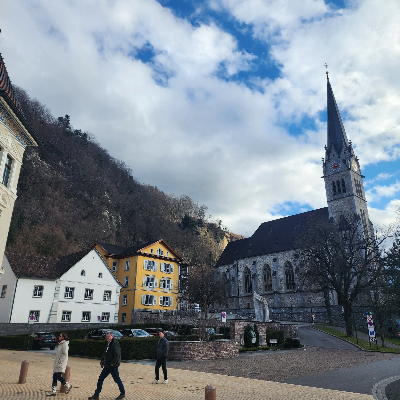
©
У Ліхтенштейні налічується 1 212 вулиць, і лише 0,6% з них носять жіночі імена. Натомість чоловічі назви зустрічаються майже в 10 разів частіше. Це дослідження показало, що жінки майже не представлені у міській топоніміці. Найчастіше серед жіночих назв можна зустріти імена святих, зокрема Goldene Boos-Gasse (Золота вуличка Боос) або St. Annagasse (Вулиця Святої Анни), тоді як чоловіки згадуються значно частіше – наприклад, у Fürst-Franz-Josef-Strasse (Вулиця князя Франца Йозефа). Проте більшість вулиць Ліхтенштейну названі не на честь людей, а за природними особливостями чи типом інфраструктури. Найпоширенішими є назви, пов’язані з ландшафтом (31%), серед яких Rietstrasse (Болотяна вулиця) та Im Loch (У ямі). Ще 23% назв пов’язані з дорогами чи будівлями, наприклад Industriestrasse (Промислова вулиця) або Landstrasse (Шосе). Цікаво, що сільськогосподарські назви залишаються поширеними, навіть попри те, що ця галузь займає менш ніж 1% економіки країни – вони становлять 17% усіх назв, наприклад Wingertgass (Виноградна алея) чи Egerta (Пасовище). Навіть назви, що здаються очевидними, не завжди означають те, що ми очікуємо. Наприклад, Katzarank (Котяче пасмо) не має нічого спільного з котами, а Im Rösle (У троянді) не обов’язково пов’язана з трояндами. Це дослідження доводить, що вуличні назви – не лише спосіб орієнтуватися в місті, а й відображення культурних традицій та історичних поглядів суспільства.
Liechtenstein Streets Show Male Dominance in Street Naming
In Liechtenstein, there are 1,212 streets, with only 0.6% bearing female names. In stark contrast, male names are found nearly ten times more frequently. A recent study reveals that women are significantly underrepresented in the country’s urban toponymy. Among the few streets named after women, the most common are those dedicated to saints, such as Goldene Boos-Gasse (Golden Boos Street) and St. Annagasse (St. Anne's Street). Meanwhile, male figures are far more prevalent, with streets like Fürst-Franz-Josef-Strasse (Prince Franz Joseph Street) being more common.However, most streets in Liechtenstein are not named after people but rather reflect natural features or infrastructure. The most frequent categories include landscape-related names, making up 31% of all street names, such as Rietstrasse (Reed Street) and Im Loch (In the Hole). Another 23% are linked to roads or buildings, with names like Industriestrasse (Industrial Street) or Landstrasse (Main Road). Interestingly, agricultural terms remain prevalent in the toponymy, despite the sector contributing less than 1% to the country’s economy. These make up 17% of the names, including Wingertgass (Vineyard Alley) and Egerta (Pasture). Even street names that appear self-explanatory can be misleading. For instance, Katzarank (Cat's Neck) has no connection to cats, and Im Rösle (In the Rose) is not necessarily related to roses. This study underscores that street names are not merely navigational tools but also reflect cultural traditions and historical perspectives within society.

©
1048